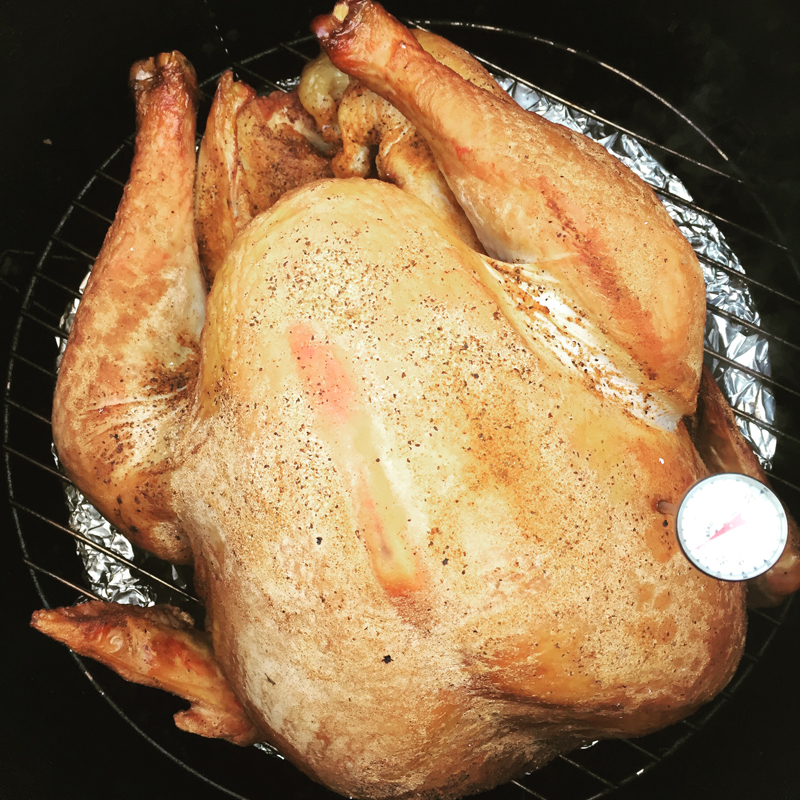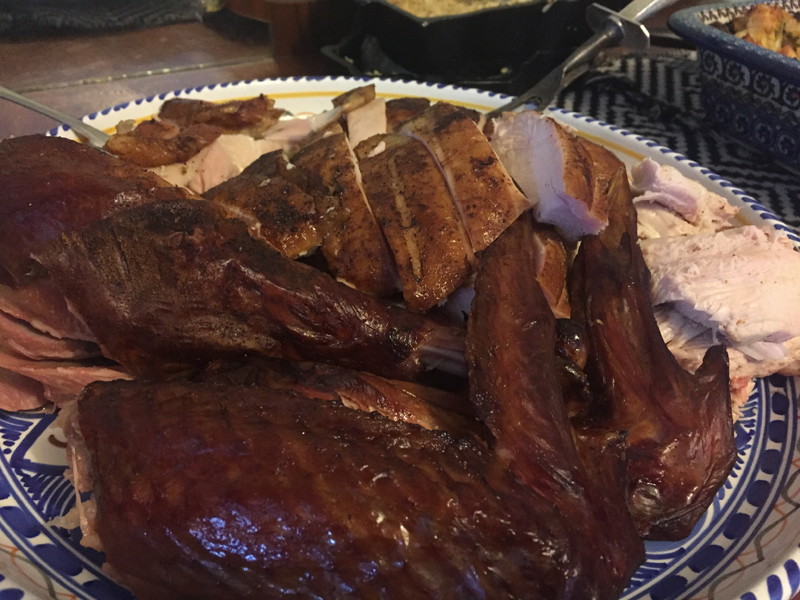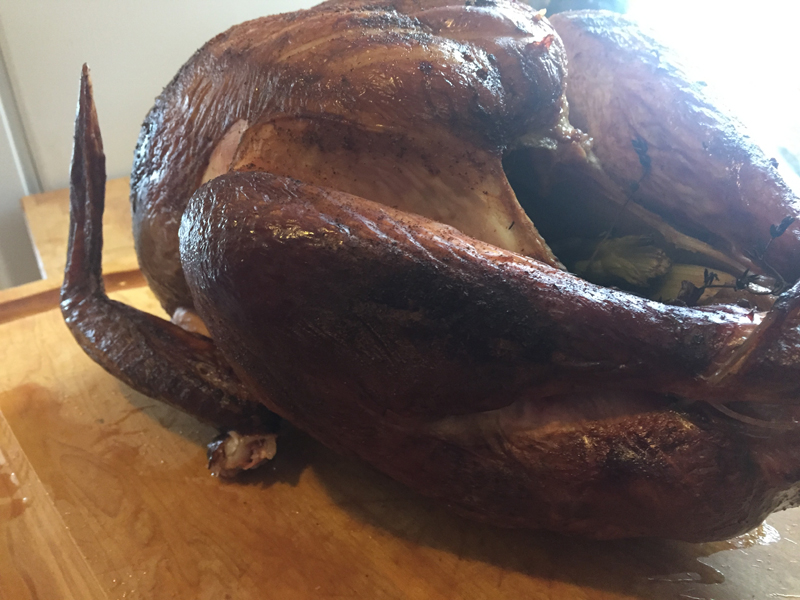If you haven’t yet resolved your Thanksgiving turkey cooking method of choice a) WHAT ARE YOU THINKING and b) OK, good news, we have an answer for you that is absolutely tremendous and will change your life.
Over the past 20 years, I have (conservatively) prepared about 65 whole turkeys for Thanksgiving or Febgiving (Thanksgiving in February) meals. Many of those have been some variation on the traditional oven roasting method, with a major subset cooked in a stand-alone NESCO electric oven. I’ve also done deep-fried turkey, and some other wonky variants, (Cornish game hens, spatchcocked turkeys, just the breast, etc. and so forth.)
However: for the past six or seven years, it’s been all smoked turkeys, all the time. Here’s the pitch:
Smoking gets the turkey out of the kitchen entirely, which lets you concentrate on making sides and other essentials without a massive bird interfering with the flow of traffic.
When done correctly, smoking creates a surprisingly juicy and moist bird.
Smoking imparts some tasty smoky flavor, but not so much that it’s aggressive or overwhelming – the sheer mass of a big bird means that the smoke tends to be a subtle complement to everything else you have going on (herbed seasoning, dressing, gravy, and so forth.) I’ve heard from guest after guest that smoked turkey is the first turkey they’ve really liked, and I’ve witnessed the clean plates that back it up.
 Smoking is almost impossible to mess up. When I’ve done it, I’ve found there’s a natural stall point where the meat temperature kind of drags for 60-90 minutes between about 145-155 F. At the start of that stall, you’re not cooked; as you come out of that stall, you pull the turkey and it carries over into a beautifully done bird.
Smoking is almost impossible to mess up. When I’ve done it, I’ve found there’s a natural stall point where the meat temperature kind of drags for 60-90 minutes between about 145-155 F. At the start of that stall, you’re not cooked; as you come out of that stall, you pull the turkey and it carries over into a beautifully done bird.
Everybody’s turkey size, smoker rig, and flavor preferences vary, so the recipe that follows should be looked at more like a method that any kind of gospel – you’ll probably end up doing some improv as you dial in your approach. Don’t feel like you need a $500 smoker to attempt this process, either – I smoke on a $99 smoker that kind of looks like a trash barrel, and get beautiful results. (I use Cowboy brand lump charcoal and cherry wood chunks from my own backyard tree, so that may help.)
This recipe uses a dry brine – there’s no better way to go in terms of crisping up skin and keeping the meat moist. Wet brines also work, but create disgustingly large pools of turkey water – dry brines have all of the advantages with none of the mess.
 SMOKED TURKEY
SMOKED TURKEY
1 15-17 pound turkey
1 cup chicken stock
2 tablespoons honey
2 tablespoons apple cider vinegar
Two days before serving, rinse turkey and pat dry. Rub all over with kosher salt, slipping salt under skin where possible and rubbing some into cavities. Use about 1 tablespoon per 4 pounds of bird.
Place bird in refrigerator on baking sheet. On second night, turn turkey over. A couple of hours before cooking, pat turkey dry. (There is no need to rinse it first.)
Remove the turkey from the fridge and allow it to sit for 30 minutes to 1 hour before cooking.
Meanwhile, prepare a smoker for indirect heat, at approximately 275 degrees F. Add wood chunks to your coals and add more halfway through the smoking process.
Brush the entire turkey with the oil and season liberally with salt and pepper.
Place the turkey in the grill or smoker directly on the grate and cook for 45 minutes.
Meanwhile, mix together the chicken stock, honey and vinegar. Baste the turkey after cooking for 45 minutes. Repeat the basting every 45 minutes until the internal temperature of the thigh registers 165 degrees F and the breast registers 155 degrees F, about 3 1/2 to 4 1/2 hours, depending on the size of the bird.
Remove the turkey to a large cutting board and let rest for at least 20 minutes before carving.

